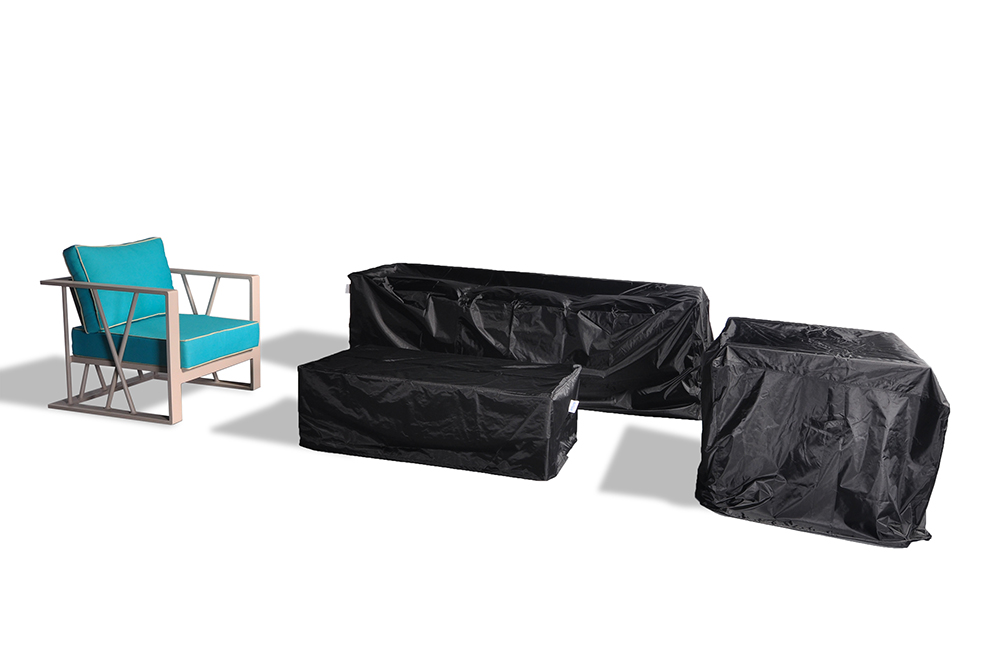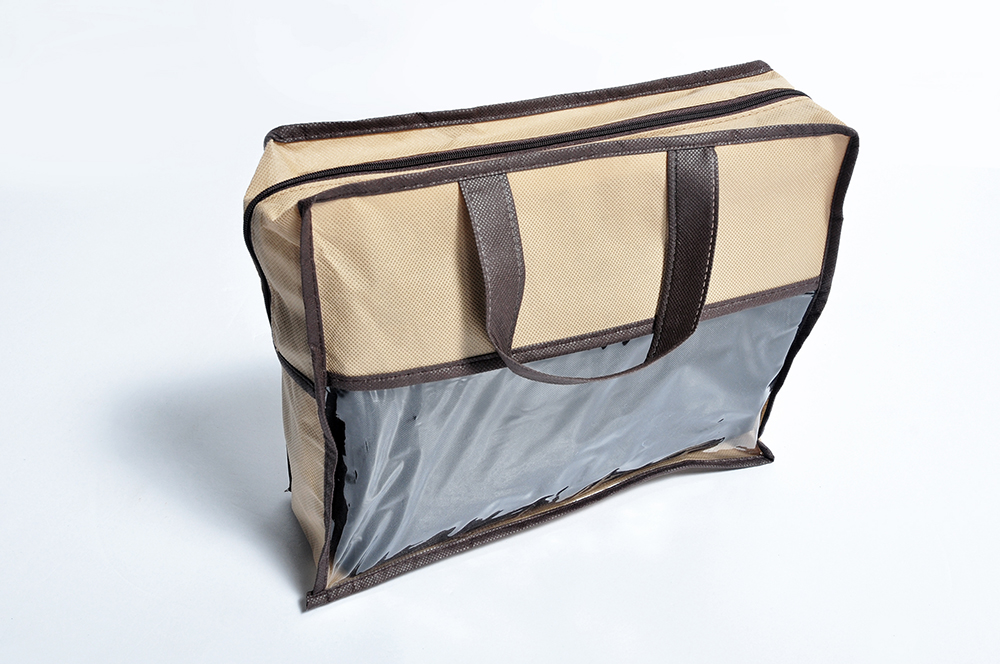Outdoor furniture covers
are polyester outer sell with PVC coating inside, keeps the elements out covers
wipe clean with a damp cloth and mild soap, with a high seam strength and
durability, don`t fade or crack in the sun.
Our
outdoor furniture covers provide an unparalleled level of protection for your
outdoor furnishings. Designed with meticulous detail, these durable covers with
polyester outer shell and a layer of water-resistant PVC to ensure superior
performance and long-lasting functionality in searing sun, blinding rain,
prodigious snow, and bitter cold.
• Lined with a layer of water-resistant
PVC
• Soft fleece underside protects
aluminum frames
• Won't fade in the hottest sun, or
crack in temperatures dropping to 0°F
• Elastic edging and/or reinforced ties
hold covers securely in place
If
you have any questions, please contact with us directly. Outdoor Furniture Covers
are produced by Golden Eagle Outdoor Furniture With High Quality and Good
Appearance. Welcome you visit our Factory. For any inquiry,Please send mail
directly to us.
In the fall of 1997, HP introduced the Jetsend protocol to support the transfer of images and data between simple devices. Jetsend itself is independent of the transport protocol. Its purpose is to send images/data directly from a simple device to another simple device. This transfer is based on the receiving party's data processing capabilities.
Jetsend will pass the image directly to the printer through a digital camera without first going through the personal computer. Of course Jetsend-supported devices also require some device category codes. The current Jetsend protocol is best suited for operations and connections in the LAN, such as IEEE1394, but the future Jetsend has the potential to support the Internet environment. At present, the requirements put forward by IPP and Jetsend are very different. Jetsend solves some basic problems in file transmission in the Internet environment and is an important chronicle in the development of Internet printing.
IV. The Internet Printing Protocol (IPP) The Internet Printing Protocol (IPP) is the latest stage in the development of the Internet Engineering Task Force (IETF). This working group has already included major operating systems and printer vendor representatives.
IPP is basically a simple client/server protocol. When the server refers to a printer or printer server, the client refers to the end-user application and can be installed on the workstation in software. The printer can be directly embedded with IPP support, or it can be connected to a server that uses a proprietary protocol. In this case, the server refers to the endpoint or the end-user IPP printer.
The basic content of the IPP protocol is divided into two parts. The first part focuses on the requirements of the end user, and the second part deals with the operations and management.
The operations of the end-user include: The most common operation of the end-user is to cancel the printing of documents and to inspect the working conditions. The "verified" operation is used to check whether the specified printer fully supports the user's printing requirements for a particular document. This operation can greatly facilitate the completion of the printing work, but in fact this operation did not go to the printing press. Send any information, if confirmed to support the user's request, will give feedback to the user, and at the end of the work, will also notify the user directly.
1. Through an application program, this is the most common way in the MS-Windows environment. As long as the user selects the "Print" option, the program will provide preset or other installed presses for the customer.
2. Send a preformatted file to the press. This file can be in the Postscript language format, or it can be written in a page description language that can be read by other printers.
3. Provide the printer with the URL of the printed document. The printer activates this document and prints it on the Internet in HTTP or FTP format.
An IPP printer can be identified by its URL, which also allows the use of a uniform naming system that is consistent with the Web address. IPP stipulates a large number of IPP printing job attributes, which allows users and operators to describe exactly the requirements of a printing job.
For security purposes, IPP also specifies the use of TLS transport layer security standards for verification and verification. The first version of TLS is similar to the SSL 3.0 standard, which is the most widely used standard in HTTP today. Recently, TLS has been submitted to the IETF Working Group as a preset standard, and it is expected that it will become the main body of the HTTP security system. The basic purpose of the IPP Working Group is to use HTTP's existing security protocols instead of specifying one.
Because IPP uses a simple form of HTTP transmission, installing IPP is not difficult. The terminal is used to use the browser, using Java, C/C++ and other language APIs to obtain HTTP under any regular operating system. At the top of the server, the HTTP server that must be installed is very simple and not as complex as a typical Web server. The complexity of the HTTP server is mainly on its proxy server. This is to support the needs of IPP rather than the requirements of the original server. Currently there is already a nested web server that takes up less than 1K of space, and it is very likely that most printer manufacturers do not have IPP support nested within the press or other printing service hardware. Of course, some other manufacturers do not need to do this, because the printing service software running on a workstation or host will serve as the IPP service terminal, so that the printer can communicate with the IPP server without any modification to the current proprietary protocol. Now.
It is hoped that in 1998 the IPP agreement will become an IETF standard. Later in 1998, various operating systems and printers supported the IPP protocol. Several printer manufacturers have already begun to install and test IPP performance. Interoperability testing has also begun. Earlier, the microcosmic company stated that it will support the IPP protocol in the future installation of the Windows architecture.
V. Conclusion A basic principle of Internet printing is to bring more convenience to end users. In addition to implementing off-site printing under different operating systems and operating platforms, it also uses the Internet architecture and existing advantages to extend the principles of local printing to the entire Internet environment. If different manufacturers and customers install and support the same Internet printing protocol, the high-quality transmission of files can be realized at a low cost, which is very likely to replace the current fax equipment. The Internet allows people to focus on establishing a unified standard to achieve mutual operations, rather than setting up their own proprietary protocols.
With the development of the Internet, there are still some difficulties and structural problems that need to be solved in Internet printing, including enterprise management, directory services, file formats, and ensuring security. It is highly probable that at first these problems were created, resolved, and over time due to the requirements of the Internet. This kind of printing under the Internet has become the basic standard for corporate printing.
This article also provides some of the major developments in the development of Internet printing, especially the generation and content of the IPP and Tetsend protocols. As long as these agreements are needed for market development, they will certainly be supported by related network products. In the printing of the Internet, printers are no longer simply offering print output services. The printers will continue to search for new benefits brought by the Internet and consider how to bring benefits to end users. 

Outdoor Furnniture Covers,Outdoor Furnniture Rain Covers,Outdoor Covers For Furniture,Outdoor Patio Furniture Covers
Golden Eagle Outdoor Furniture Co., LTD. , https://www.geoutdoor.com